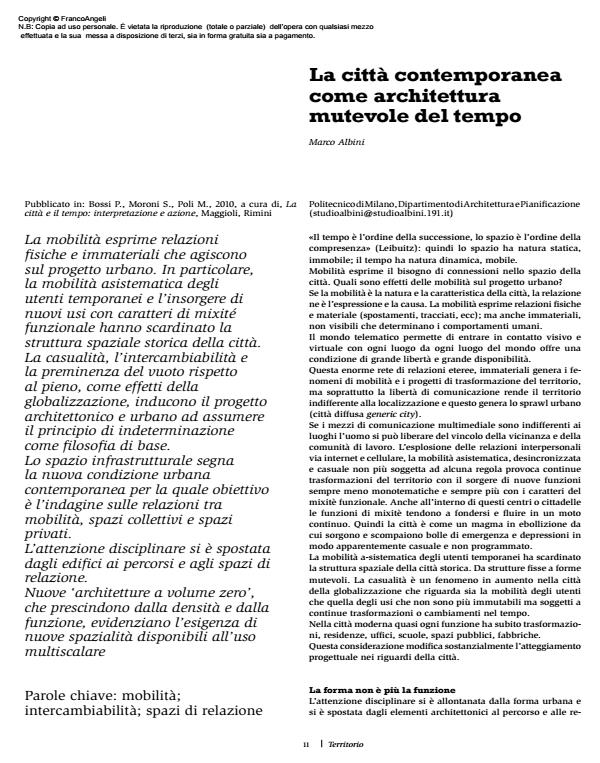The contemporary city as architecture that changes over time
Journal title TERRITORIO
Author/s Marco Albini
Publishing Year 2011 Issue 2010/55
Language Italian Pages 4 P. 11-14 File size 506 KB
DOI 10.3280/TR2010-055002
DOI is like a bar code for intellectual property: to have more infomation
click here
Below, you can see the article first page
If you want to buy this article in PDF format, you can do it, following the instructions to buy download credits

FrancoAngeli is member of Publishers International Linking Association, Inc (PILA), a not-for-profit association which run the CrossRef service enabling links to and from online scholarly content.
Mobility expresses physical and immaterial relationships which act on urban design. The asystematic mobility of temporary city users and the appearance of new uses with traits of functional mixité have disrupted the historical spatial structure of cities. The randomness, the interchangeability and the predominance of empty compared to full spaces, as the effects of globalisation, are inducing architectural and urban design to adopt the principle of indetermination as a basic philosophy. Infrastructural space is an indicator of the new contemporary urban condition for which the objective is to investigate the relations between mobility, collective spaces and private spaces. The attention of the experts has shifted from buildings to routes and social spaces. New ‘zero volume architectures’ which, regardless of the density and the function, highlight the demand for a new sense of space available for multi-scalar use.
Keywords: Mobility; interchangeability; social spaces
Marco Albini, La città contemporanea come architettura mutevole del tempo in "TERRITORIO" 55/2010, pp 11-14, DOI: 10.3280/TR2010-055002